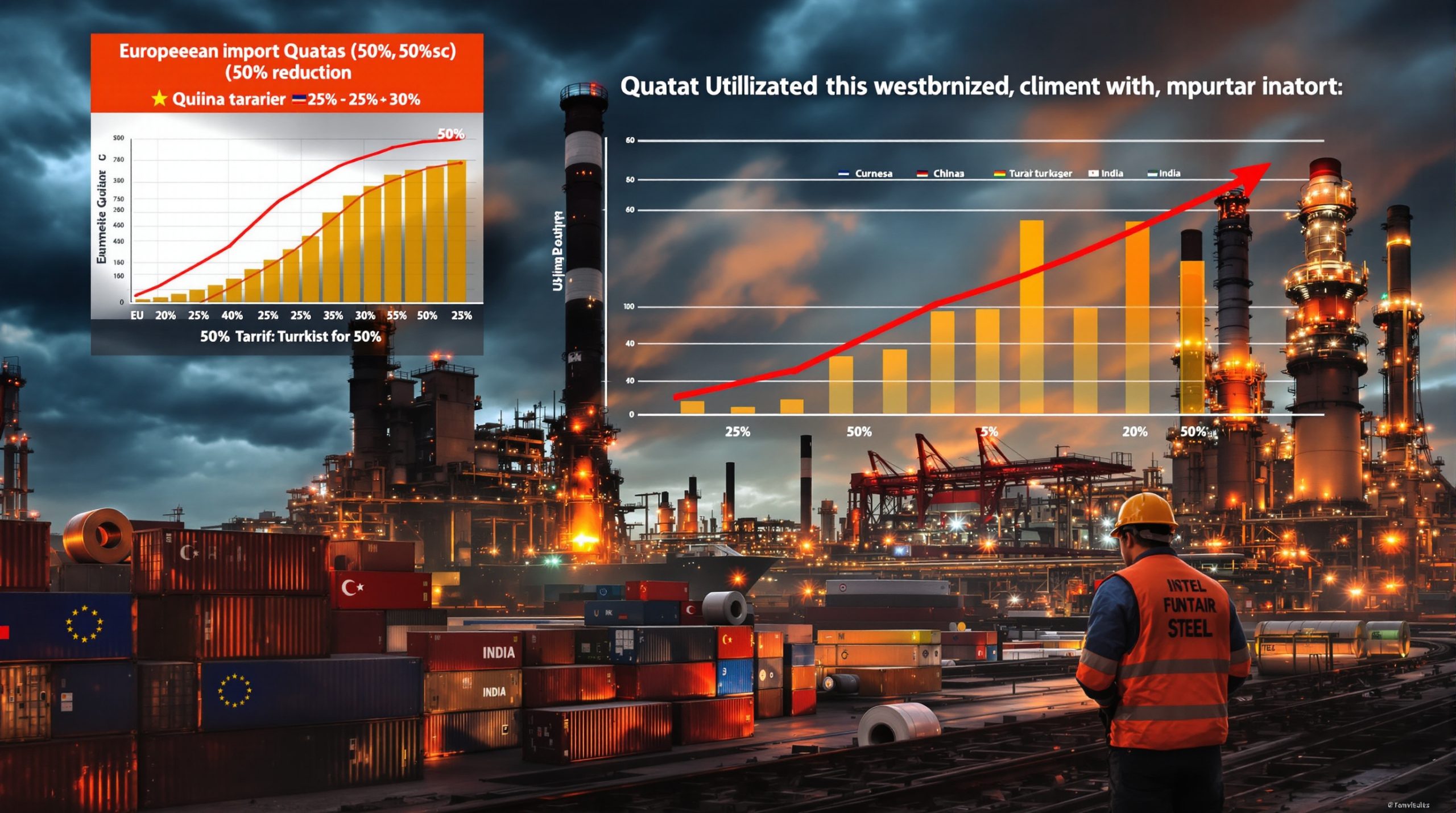What Is Driving the Gold Price Rally in 2025?
The gold market has experienced a remarkable bull run in 2025, with prices approaching the significant psychological barrier of US$3,000/oz (approximately A$4,500/oz). This represents a substantial increase from previous years and continues the upward trajectory that began after the pandemic-driven rally.
Several key factors are powering this impressive gold price performance:
- Global Economic Uncertainty – Persistent inflation concerns and slowing growth in major economies have increased demand for safe-haven assets
- Central Bank Buying – Official sector purchases remain strong as countries diversify reserves away from traditional currencies
- Geopolitical Tensions – Ongoing conflicts and trade disputes create market volatility that benefits gold
- Investment Demand – ETF holdings and physical gold purchases have surged as investors seek inflation hedges
Beyond these traditional drivers, the gold market has been influenced by structural shifts in the global financial landscape. The diminishing role of the US dollar as the sole reserve currency has created additional demand for gold as a monetary alternative.
For Australian investors, the exchange rate dynamics have provided an additional tailwind, with the Australian dollar gold price benefiting from currency movements relative to the USD. Recent gold prices analysis 2025 indicates this trend is likely to continue.
How Are ASX All Ords Gold Stocks Performing in 2025?
The ASX All Ordinaries Gold index (XGD) has delivered strong performance throughout 2025, though with significant variation between individual stocks. This benchmark for the sector's performance tracks gold mining and exploration companies included in the broader All Ordinaries index.
The index has demonstrated remarkable resilience amid broader market volatility, with gold stocks generally outperforming most other sectors. This outperformance reflects both the rising gold price environment and improved operational discipline across the industry.
Several key trends have emerged within the ASX gold sector:
- Margin Expansion – Rising gold prices have significantly improved profit margins for producers with stable cost structures
- Increased Exploration Activity – Higher gold prices have incentivized companies to accelerate drilling programs and resource definition
- Capital Management Focus – Many producers have strengthened balance sheets and returned capital to shareholders
- M&A Acceleration – The sector has seen increased consolidation as companies seek to build scale and operational synergies
Notably, companies with producing assets have generally outperformed those still in development or exploration phases, though exceptional drilling results have occasionally propelled earlier-stage companies to significant gains. According to the All Ordinaries Gold index, this sector continues to outpace many other investment categories.
Which ASX All Ords Gold Stocks Are Leading the Pack?
Medallion (ASX:MM8)
Medallion has emerged as one of the standout performers in the ASX gold sector, with its share price experiencing remarkable growth over the past year. The company's Ravensthorpe Gold Project in Western Australia serves as its flagship asset, with a JORC Resource exceeding 1 million ounces of gold.
The company has strategically diversified its portfolio through:
- A minority stake in NickelSearch (ASX:NIS)
- Strategic acquisition of assets from the Forrestania gold/nickel operation
- Development of an initial production inventory of 342,000 ounces of gold
This Forrestania acquisition demonstrates particularly compelling economics in the current gold price environment, with projected payback measured in months rather than years. The company's ability to execute strategic acquisitions while advancing its existing projects has resonated strongly with investors.
Dateline Resources (ASX:DTR)
Dateline has undergone a remarkable transformation in recent months, experiencing exponential market capitalization growth. The company's portfolio includes:
- 100% ownership of the Colosseum Gold-REE Project in California
- The Gold Links project in Colorado
The rising gold price environment has substantially improved Dateline's economic projections, enhancing projected revenue and net present value calculations. Additionally, the company's rare earth elements exposure provides investors with diversification within a single mining stock, creating a unique value proposition in the market.
Dateline's technical team has implemented innovative exploration techniques that have significantly expanded the resource potential at both properties.
Barton Gold Holdings (ASX:BGD)
Barton Gold Holdings has established itself as one of the sector's standout performers, with substantial share price appreciation over the past year. The South Australian-focused gold developer controls a resource base of 1.7 million ounces of gold and has clearly articulated its strategic vision to become a 150,000-ounce annual producer.
A significant competitive advantage for Barton is its ownership of a regional gold mill in the Gawler Craton, which provides multiple benefits:
- Reduced infrastructure development risk
- Lower processing cost uncertainties
- Operational control over the processing phase
- Potential to process ore from third parties as an additional revenue stream
The company's inclusion in the All Ordinaries index has enhanced its visibility among institutional investors, further supporting share price performance.
New Murchison Gold (ASX:NMG)
New Murchison Gold, previously operating as Ora Gold, has delivered exceptional returns to investors, with its market capitalization expanding significantly. The company holds an extensive land package in Western Australia's Murchison goldfield near Meekatharra, with its Crown Prince deposit within the Garden Gully project serving as its flagship asset.
A key strategic advantage for NMG is its binding ore purchase/processing agreement with Big Bell Gold Operations (a Westgold subsidiary). This arrangement provides several benefits:
- Elimination of capital expenditure required for mill construction
- Accelerated timeline to production by leveraging existing infrastructure
- Reduced overall project execution risk
The company recently secured substantial funding to accelerate its production timeline, which, combined with encouraging high-grade exploration results, has fueled investor optimism about its near-term production potential.
Pantoro (ASX:PNR)
With substantial market capitalization growth and strong share price performance, Pantoro has cemented its position as a major player in Western Australia's gold sector. Operating as both an explorer and producer, the company has delivered consistent positive news across multiple fronts:
- Implementation of an aggressive drilling program (approximately 250,000 meters planned)
- Successful resource expansion initiatives that have extended mine life projections
- Strong production performance, with consistent quarterly output
- Disciplined cost control maintaining attractive operating margins
This balanced approach to growth through both exploration and production has resonated strongly with investors seeking exposure to the gold sector.
Why Are Some Gold Stocks Underperforming Despite the Gold Price Surge?
Greatland Resources (ASX:GGP)
Despite its recent dual listing on the ASX and AIM with the backing of prominent mining investor Andrew Forrest (via Wyloo), Greatland Resources has struggled to gain traction with investors. The company faced significant challenges when initial production guidance of 340,000 ounces annually was substantially reduced shortly after listing.
Simultaneously, the company's capital expenditure estimates for the Telfer gold and copper mine increased dramatically, triggering regulatory scrutiny. The ASX issued a "please explain" notice questioning why this information wasn't disclosed earlier in the listing process.
These early missteps created a credibility gap with investors that has proven difficult to overcome, despite the underlying asset quality.
Bellevue Gold (ASX:BGL)
Although showing signs of stabilization, Bellevue Gold remains well below its previous peak. The company's namesake project contains impressive resources of 11 million tonnes at 9 g/t for 3.2 million ounces of gold, and it successfully entered production in 2023.
However, investor confidence was severely eroded by operational challenges including:
- Multiple production downgrades within a short timeframe
- Cost escalation beyond initial projections
- Technical difficulties during the ramp-up phase that proved more complex than anticipated
- Dilutive capital raising to strengthen the balance sheet amid operational issues
Recent months have seen some recovery in the share price, supported by takeover speculation and operational improvements, but the stock continues to trade at a discount to its historical valuation.
West African Resources (ASX:WAF)
West African Resources, focused on operations in Burkina Faso, has faced significant challenges despite operating its successful Sanbrado mine, which produces over 200,000 ounces annually. The company's plans to develop its Kiaka project as another major production center have been complicated by government intervention.
The situation reflects broader resource nationalism trends in the region, with the Burkina Faso government seeking to increase its ownership stake substantially. This development has created significant uncertainty regarding project economics and future returns.
Trading in the company's shares has been suspended while negotiations continue, leaving investors in limbo regarding the ultimate resolution and its impact on project value.
Brightstar Resources (ASX:BTR)
With only modest share price appreciation during a strong gold market, Brightstar Resources has significantly underperformed the broader gold sector. The company controls a 1.45 million ounce resource and operates two mines, with expansion plans in development.
Several factors have contributed to investor caution:
- Challenged financial position with operating losses despite favorable gold prices
- Limited cash reserves relative to ongoing capital requirements
- Drawn debt facilities creating balance sheet concerns
- Higher-than-expected production costs eroding potential margins
These financial challenges have overshadowed the company's resource base and production potential, limiting share price appreciation despite the favorable gold price environment.
Gold Road Resources (ASX:GOR)
With moderate share price increase in a strong gold market, Gold Road Resources has underperformed relative to sector leaders. This gain largely resulted from corporate activity rather than operational outperformance.
The company has faced several operational challenges:
- Production trending toward the lower end of guidance ranges
- Cost metrics pushing toward the upper end of projected ranges
- Limited organic growth options compared to some peers
- Potential integration challenges following corporate transactions
The fact that a company with reasonable year-to-date gains can be considered an underperformer highlights the exceptional strength of the gold sector in the current market.
What Factors Determine Success for ASX Gold Stocks in the Current Market?
Operational Efficiency and Cost Control
In the current high gold price environment, companies demonstrating operational discipline and cost control are particularly well-positioned. Operations with controlled all-in sustaining costs (AISC) can generate substantial margins, enhancing free cash flow and dividend potential.
Key metrics investors are focusing on include:
- Production volume consistency relative to guidance
- AISC trends and management effectiveness
- Cash flow generation and conversion rates
- Return on invested capital across project portfolios
Companies that maintain disciplined cost structures even during favorable price environments are generally rewarded with premium valuations, as they position themselves to weather potential future price volatility.
Project Development Timeline and Execution
For companies transitioning from exploration to production, the ability to deliver projects on schedule and within budget has become increasingly important. The market rewards companies that:
- Demonstrate clear, realistic pathways to production
- Minimize capital intensity through innovative development approaches
- Reduce time to first gold through phased development strategies
- Utilize existing infrastructure where possible to reduce upfront capital requirements
Companies with proven project delivery track records typically trade at premium valuations compared to peers with similar assets but unproven execution capabilities.
Resource Quality and Growth Potential
The quality of gold resources continues to be a fundamental driver of valuation. Companies reporting high-grade discoveries or resource expansions generally outperform, particularly when these developments occur near existing infrastructure.
Investors place premium valuations on companies with:
- High-grade deposits that maintain profitability even at lower gold prices
- Resource growth potential through systematic near-mine exploration programs
- Clear mineral resource to ore reserve conversion strategies that minimize development risk
- Long mine life potential that extends production horizons beyond typical investment timeframes
The combination of resource quality and growth potential creates a compelling investment narrative that often drives share price outperformance. Many analysts are now forecasting a historic 3000 price surge in the gold market, which could further boost these stocks.
Jurisdiction and Geopolitical Risk Management
The importance of operating in stable mining jurisdictions has been highlighted by the challenges faced by companies with exposure to regions experiencing political instability or resource nationalism.
Western Australia continues to be viewed as a premier gold mining jurisdiction due to:
- Consistent regulatory environment with transparent processes
- Well-established mining infrastructure and service provider ecosystem
- Skilled workforce availability through established FIFO networks
- Supportive government policies that encourage responsible resource development
Companies with assets in higher-risk jurisdictions increasingly implement sophisticated risk management strategies, including political risk insurance, strategic local partnerships, and diversified asset portfolios.
How Can Investors Approach the ASX Gold Sector in Late 2025?
Portfolio Diversification Strategies
Given the significant performance dispersion within the gold sector, investors may benefit from diversified exposure across different company types:
- Major producers providing stability and dividend income
- Mid-tier developers offering near-term production growth
- Advanced explorers presenting resource expansion potential
- Early-stage explorers providing speculative upside (limited allocation)
This layered approach provides balanced exposure to gold price movements while mitigating company-specific risks that could impact individual holdings.
Key Technical and Fundamental Indicators
When evaluating individual gold stocks, investors should consider both technical and fundamental factors:
Technical indicators:
- Trading volume trends relative to historical patterns
- Price movements relative to key moving averages (50-day, 200-day)
- Relative strength compared to the XGD index and broader market
- Support and resistance levels established through previous price action
Fundamental indicators:
- Enterprise value to resource ounce ratios compared to peer group averages
- Price to net asset value metrics under various gold price scenarios
- Free cash flow yield at current and projected production levels
- Production growth profile and associated capital requirements
The integration of both technical and fundamental analysis provides a more complete investment thesis than either approach in isolation.
Risk Management Considerations
The volatility inherent in the gold sector necessitates robust risk management practices:
- Position sizing appropriate to company market capitalization and liquidity profiles
- Awareness of company-specific catalysts including reporting schedules and major milestones
- Understanding of operational risks and management mitigation strategies
- Regular portfolio rebalancing to maintain desired exposure levels as valuations shift
Establishing stop-loss levels and profit-taking targets before entering positions helps remove emotion from investment decisions during periods of high volatility.
Long-term vs. Short-term Investment Approaches
Investors should align their gold sector strategy with their broader investment timeframe and objectives:
Long-term investors might focus on:
- Companies with sustainable cost structures below industry averages
- Strong balance sheets with minimal debt obligations
- Disciplined capital allocation frameworks that prioritize shareholder returns
- Consistent exploration success driving organic resource growth
Short-term traders might prioritize:
- Companies with near-term catalysts such as production milestones or resource updates
- Technical breakout candidates showing momentum divergence from the sector
- Stocks with high beta to gold price movements during trend changes
- Special situations including potential takeover targets or significant project approvals
Clear timeframe definition helps determine appropriate entry and exit strategies as well as position sizing within a portfolio context. For investors seeking more guidance, various gold market investment strategies can help optimize returns.
What's the Outlook for ASX Gold Stocks for the Remainder of 2025?
The outlook for ASX All Ords Gold Stocks remains broadly positive for the remainder of 2025, supported by several key factors:
- Continued strength in gold prices driven by global macroeconomic conditions
- Increasing investor interest in the sector as a hedge against economic uncertainty
- Improved operational performance as companies optimize existing operations
- Potential for increased merger and acquisition activity as companies seek scale advantages
However, selective stock picking will remain important, as company-specific factors continue to drive significant performance divergence within the sector.
Investors should remain vigilant regarding several potential challenges:
- Potential margin compression if input costs (labor, energy, consumables) rise faster than gold prices
- Execution risks as companies accelerate development plans to capitalize on favorable pricing
- Valuation considerations, with some stocks trading at significant premiums to historical averages
- Geopolitical developments that could impact operations in certain jurisdictions
The balance between these positive drivers and potential challenges will likely create a market environment where company-specific factors increasingly differentiate performance within the sector. As highlighted in recent gold record highs insight reports, inflation hedging continues to drive significant investor interest.
FAQs About ASX All Ords Gold Stocks
What is the ASX All Ordinaries Gold index?
The ASX All Ordinaries Gold index (XGD) tracks the performance of Australian gold mining and exploration companies included in the All Ordinaries index and classified under the Gold sub-industry according to the Global Industry Classification Standard (GICS). This index serves as a benchmark for gold stocks listed on the ASX and undergoes quarterly rebalancing to reflect changes in constituent companies.
How can investors gain exposure to the ASX gold sector?
Investors can gain exposure to the ASX gold sector through multiple channels:
- Direct investment in individual gold mining stocks based on specific company thesis
- Gold-focused ETFs and managed funds providing diversified sector exposure
- Physical gold ETFs tracking the gold price rather than company performance
- Options and derivatives on gold stocks or indices for leveraged exposure
Each approach offers different risk-reward profiles and should align with individual investment objectives and risk tolerance.
What are the key risks for ASX gold stocks?
Key risks for ASX gold stocks include:
- Gold price volatility affecting revenue projections and mine economics
- Operational challenges including grade variability, recovery rates, and equipment reliability
- Cost inflation, particularly for labor, energy, and consumables in remote locations
- Regulatory and environmental approval delays affecting development timelines
- Geopolitical risks in international operations including resource nationalism
- Resource depletion requiring ongoing exploration success to maintain production profiles
Understanding these risk factors is essential for developing appropriate investment strategies within the gold sector.
How do dividend policies vary among ASX gold producers?
Dividend policies among ASX gold producers vary considerably based on company size, project portfolio, and growth objectives:
- Major producers typically target dividend payout ratios of 30-50% of free cash flow
- Mid-tier producers often implement progressive dividend policies as production stabilizes
- Smaller producers and developers generally prioritize reinvestment in growth initiatives
- Some companies have adopted innovative dividend policies linked to prevailing gold prices
Dividend yields and sustainability have become increasingly important to investors seeking both growth and income from gold sector investments.
What impact do exchange rates have on ASX gold stocks?
Exchange rates, particularly the AUD/USD rate, significantly impact ASX gold stocks through multiple channels:
- A weaker Australian dollar typically benefits Australian gold producers through margin expansion
- Currency hedging strategies create significant differentiation between companies
- International operations create complex currency exposure profiles requiring sophisticated management
- Capital expenditure planning must account for potential currency fluctuations during project development
Understanding a company's currency exposure and hedging strategy provides important context for evaluating its sensitivity to both gold price movements and exchange rate fluctuations. Current gold price forecast 2025 projections suggest continued strength in the sector.
Ready to Discover Your Next Mining Investment Opportunity?
Stay ahead of the market with Discovery Alert's proprietary Discovery IQ model, delivering instant notifications on significant ASX mineral discoveries and turning complex data into actionable insights. Visit our dedicated discoveries page to understand why major mineral discoveries can lead to exceptional investment returns.




